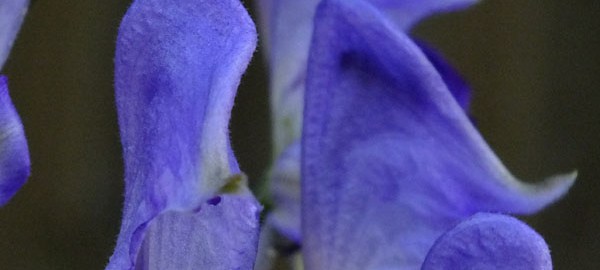For plant collectors, the Podophyllum name sparks instantly the ‘rare plants’ lust. Like with the Arisaema species, unfortunately the North American continent wasn’t left with much: only one Podophyllum species, the Mayapple, Podophyllum peltatum. It is a wonderful wildflower with personality which will slowly form a colony in suitable conditions in the forests/ or woodland garden.

Podophyllum peltatum erupting from the ground in early spring
The genus name comes from the Greek ‘anapodophyllum’ meaning a leaf like the foot (podos) of a duck (anas) and peltatum – refers to the specific attachment of the leaf stalk near the center of the leaf blade.
Mayapples can be found in deciduous forests, both in bottomlands and on drier sites. Large colonies usually develop in places with more moisture. Although they can grow in dry places, underneath the trees, in very dry years, they can go dormant in early fall. Some of its companion plants are: Sanguinaria canadensis, Caulophyllum thalictroides, Trillium grandiflorum, Uvularia grandiflora….
Mayapples emerge in early spring with a couple of tightly closed leaves, which expand umbrella-like afterwards and cover one solitary, white, waxy flower somewhere in May; if pollinaton was successful, ‘green apples’ will form. Unfortunately, the frequency of successful pollination is not high in Mayapple flowers, even if various pollinators visit the flowers.
Therefore, the fruit set rates are often low for individual colonies of plants, and even more, I have noticed that in years with drought most fruits are aborted. The ripe fruits are the only part of the plant that’s not toxic, and are called “hog apples” or “wild lemons”. They become yellow and fragrant when fully ripe, usually in mid to late August (no idea why the ‘mayapple’ name). They are enjoyed by a variety of small animals, which are also the principal seed dispersers (the Eastern box turtle, gray squirrels, opossum, raccoons…).
So yes, Mayapple’s ripe fruits are edible, and you can even find recipes for jellies.
Medicinal importance
 Even if the whole plant, except mature fruits, contains toxic substances, the Mayapple has also been a staple medicinal plant in the repertoire of the Indigenous Peoples, being used as: boiled roots (laxative), juice of the fresh rhizome (to improve hearing), powdered root (skin ulcers and sores, purgative), to mention just the well-known uses.
Even if the whole plant, except mature fruits, contains toxic substances, the Mayapple has also been a staple medicinal plant in the repertoire of the Indigenous Peoples, being used as: boiled roots (laxative), juice of the fresh rhizome (to improve hearing), powdered root (skin ulcers and sores, purgative), to mention just the well-known uses.
At some point, the Mayapple resin (extracted from the rhizome) was considered one the most powerful laxatives available, and it was even sold commercially (Carter’s Little Liver Pills in early 1900s), but because of the toxicity, this use has been discontinued.
More recently, pharmaceutical research proved that certain chemical constituents of the Podophyllum species can be used as anticancer agents. The substance responsible is called podophyllin and it is a resin contained in the rhizome (see the use of powder root to treat skin ulcers). This resin is composed of several toxic glycosides, the most active being podophyllotoxin. Derivatives of the podophyllotoxin (etoposide and teniposide) were formulated into anticancer drugs used in chemotherapy to inhibit the growth of tumors in various types of cancer.
Propagation
Actually, all Podophyllum species are very easy to cultivate – all you need is shade…and seeds or rhizomes cuttings. You can read a detailed account for growing Mayapple from seeds here: Growing Podophyllum from seeds.
It is not difficult if you follow the directions. Mayapple seeds need to be sown fresh, if not moist packed, in order to obtain good germination. Be aware of companies selling dry kept seeds!!!

Podophyllum peltatum first year seedlings with cotyledon leaves in 2018; these are grown up by now and flowering!
Patience is required like with all other rhizomatous species, which are slow to develop in the first years. From seeds they will flower in 5-6 years.
As a side note, the seeds are enclosed in a sticky, mucilaginous mass, and are the most awful seeds to clean out! Ask everyone who has ever done it!
In dry years, the few formed fruits are aborted and offered seeds are quite rare, or available in tiny amounts. So, take advantage of this wet season when more fruits have been produced if you want to grow a few umbrellas in your woodland garden.
The Seeds Shop will open for orders next Monday, Aug. 28th – watch for the announcement and please do not order before!























































